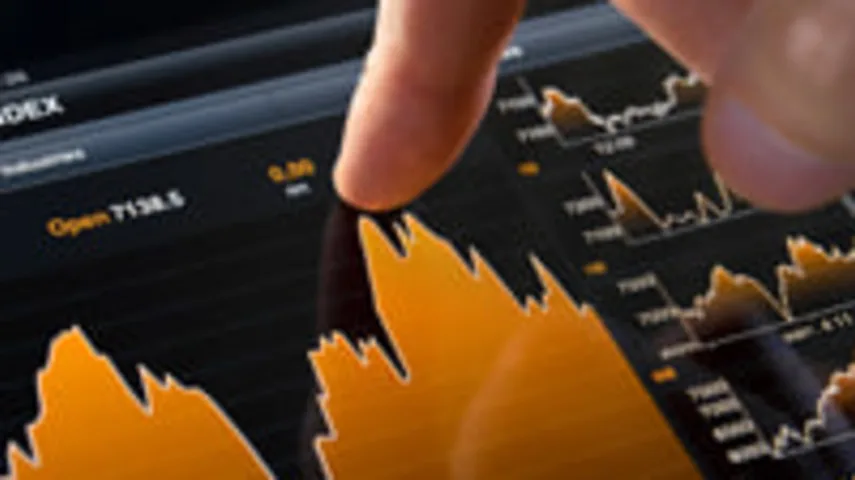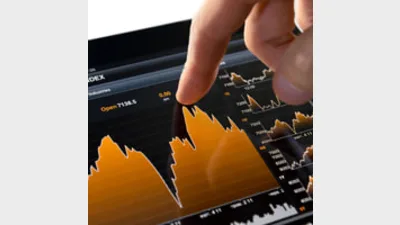Is the Australian share market due for a correction?



Following the recent market rally, Dr Ron Bewley asks the question: is the Australian share market due for a correction?
The US just experienced the best market rally for the month of September since 1939. We followed suit. Can this rally keep going?
Is a correction inevitable?
Only a fool would rule out a correction or worse at any time. The question I pose is better stated more formally in three parts.
- Has recent market behaviour been unreasonable from an historical perspective?
- Is the market currently overpriced?
- Are the fundamentals strong for the year ahead?
Of course, if the market has legs, the natural question is in which sectors should long-term investors be looking? I address this allocation decision.
Based on the highly technical research behind my analysis, I am reasonably optimistic. Not ‘kick the lights out and let’s party’ optimistic, but neither will I hang out with the party poopers.
Solid above-average returns from a solid base give me comfort.
That being said, the world is coming out of a truly terrible recession, there is an ongoing currency war and protectionism is rearing its ugly head. This scenario doesn’t bode well for a peaceful New Year elsewhere. My focus is Australia.
All of my research is founded on fairly sophisticated quantitative analysis of broking analysts’ forecasts of company earnings and dividends. I add no qualitative overlay.
So if the analysts’ forecasts do not cut the mustard, neither does my translation. I personally know of no better source of company forecasts.
Historical perspective
I presented an analysis at the end of June 2010 comparing the behaviour of the 2007-2010 bear market and recovery with prior bear markets.
My thesis was and is simple. There have been 13 bear markets in Australia since records began in 1875. Seven of them, including the recent one, are visually quite similar.
Two, following the Great Depression and the 1973-74 recession, are particularly similar to the 2007-2010 fall and recovery. I plot this data in figure 1.
The only material difference between this chart and the one from the end of June is the addition of the intervening data for July to October.
By my reckoning, we are still on track to follow previously trodden steps.
Of course, this pattern does not mean we must follow this path, or even that it is likely, but it does show that if the market does retrace back to level with the 2007 peak within three years, there is nothing unusual about that.
What is more important is that if the market does follow my detailed analysis of broker forecasts, the All Ordinaries will bisect the two previous recoveries in figure 1.
Along the way, there are likely to be ups and downs, but monthly averages hide some of these.
Market mispricing
I have just completed the construction of my new measure of market mispricing or exuberance. It is now based on the price index and capital gains forecasts rather than the accumulation index and total returns forecasts.
I also take the measures back to 2002 using I/B/E/S data in Thomson Reuters Datastream.
2002 was the end of the tech-wreck and 9/11 bear market in the US, and the recovery started in March 2003. In this early period, the market was underpriced (see figure 2).
The market then fluctuated in short clusters of over and underpricing until the peak of November 2007.
By this analysis, the market was heavily underpriced in 2008-2009, which enabled such a strong rally from March 2009.
The rally stalled in late 2009 due to overpricing. The Greek debt problem and the resources tax contributed to the under-pricing, and the September 2010 rally wiped out the underpricing.
The market is currently neither underpriced or overpriced by a significant amount. Since it seems some exuberance follows underpricing, a small rally could take place even without positive fundamentals.
Where to from here?
I have used the broker forecasts of dividends and earnings to construct 12-month-ahead forecasts for each sector and the market (see figure 3).
When these are combined with my forecasts of volatility and correlation for these sectors, I can produce sector weights for the next three months (see figure 4).
It is normal to introduce bounds on these sector weights so that they cannot deviate too far from the market capitalisation weights that make up the index. I produce expected total returns (including dividends), capital gains, market cap weights and two sets of weights — standard and aggressive.
I present only the aggressive weights in figure 4.
Of course the standard and aggressive weights are not appropriate for many investors, but they do give an indication of where the collective wisdom of hundreds of broking analysts might consider the way to go.
The usual suspects of energy, materials and industrials (including mining services) appear to have a strong future and attract overweight positions.
Consumer staples, consumer discretionary and utilities join them but financials and real estate invstment trusts are the big expected relative underperformers.
The point of this article is not how to set a portfolio.
It does show, in my opinion, that a moderately strong set of fundamentals underpin the market — based on a resources boom with a finance sector less buoyant owing to compressed margins.
Numbers without intuition make no sense to me. I see here a coherent story that the rally has legs but corrections will almost certainly occur along the way.
My other research (based on my fear and disorder indexes) show that our market is quiet settled at the moment and might be able to withstand the buffeting from world markets.
Dr Ron Bewley is an investment consultant at Infocus.
Recommended for you
In this episode of Relative Return Insider, host Keith Ford and AMP chief economist Shane Oliver unpack the RBA’s decision to keep the cash rate on hold in the face of rising inflation and whether the governor’s hawkish tone is a sign of things to come.
In this episode of Relative Return Insider, host Keith Ford and AMP chief economist Shane Oliver discuss the September quarter GDP figures, which show Australia’s economy regaining momentum.
In this new episode of The Manager Mix, host Laura Dew speaks to Haley Devine, head of wealth management at MaxCap Group, to delve into private credit and commercial real estate.
In this new episode of The Manager Mix, host Laura Dew speaks to Benjamin Leung, head of systematic investments at Macquarie Asset Management, to understand the use of systematic investments.







